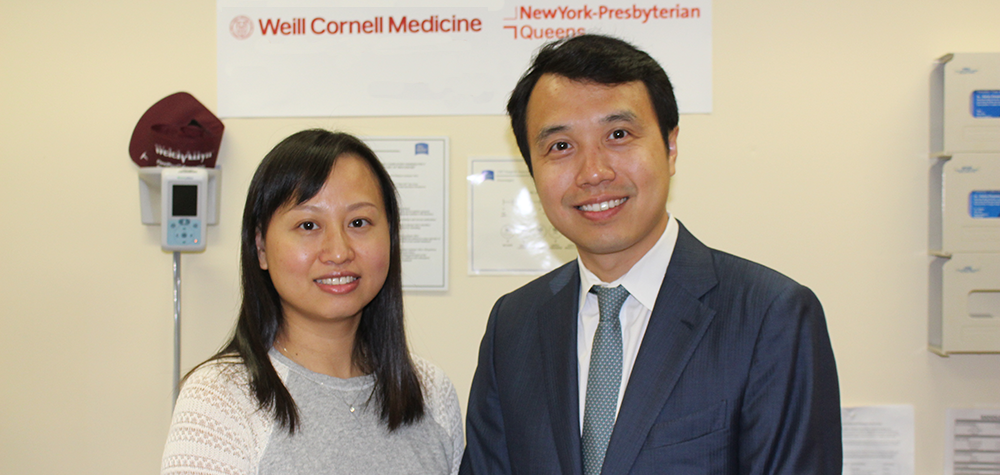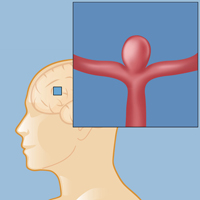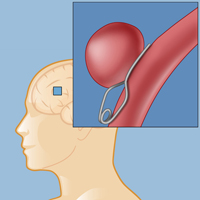
A stay-at-home mom is stricken when an aneurysm she never knew she had suddenly ruptures. Thanks to Dr. Ning Lin and the neurosurgery team at NewYork-Presbyterian Queens and New York-Presbyterian Weill Cornell, she is back home with her husband and children, and back to enjoying her normal days.
Danli Lin is 38 years old, the mother of two young children, and in excellent health. To meet her, you would never guess that her life is really quite remarkable, and that less than a year ago she was at serious risk of permanent neurological damage.
In June 2015, the stay-at-home mom was having what she calls “just a normal day” — her 3-year-old son was at nursery school, and she had nursed her infant daughter and put her in for a nap before doing the dishes. A friend stopped by, and they moved from the kitchen to the living room to continue their conversation. That’s about the last thing Danli remembers.
“I think I lost consciousness right away,” she says. “I didn’t even feel pain. And I don’t really remember much of what happened between my aneurysm rupturing and the time I woke up in the hospital.”
Cerebral aneurysms are bulbous anomalies on blood vessel walls. They rarely cause any symptoms if they stay intact, and most patients never notice their existence. If an aneurysm ruptures, however, it causes a subarachnoid hemorrhage in the brain, which is what occurred in Danli’s case. This is a highly dangerous condition that can be fatal if it is not treated urgently in a specialized neurovascular center.
Danli was very lucky to have her visiting friend with her that morning to call 911, and even luckier to live in Flushing, near NewYork-Presbyterian Queens. The FDNY ambulance whisked her to the emergency room while friends and neighbors contacted her husband and arranged care for the children. Her blood pressure and other vital signs were stabilized and she was given anti-seizure medication there, and she was transferred to New York-Presbyterian/Weill Cornell Medical Center, where patients with cerebral aneurysms and subarachnoid hemorrhage can be treated.

An aneurysm is a "bubble" of the wall of a blood vessel. Over time it can weaken and rupture.
“Dr. Lin came to my room and told me that I had an aneurysm and it had ruptured,” says Danli. “He said he was going to perform a surgery the next morning in which he would ‘clip’ the aneurysm. I didn’t quite understand what an aneurysm was, but Dr. Lin showed me my CTA scan and described everything to me. He was very calm and patient. He seemed very confident about the surgery and didn’t make me feel nervous at all.”
“Danli had a large middle cerebral artery aneurysm that ruptured and caused the hemorrhage,” says Dr. Lin. “It is very important to secure the aneurysm within 24 to 48 hours so that it does not bleed again. We first performed a cerebral angiogram to better delineate the anatomy of the aneurysm. Given its shape and relatively superficial location, we felt that surgical clipping is the best way to treat it.”
Danli’s surgery went well and she was awake and talking to her family the next day. Soon she was able to get out of bed and walk a few steps. She was monitored in the hospital for 15 days to ensure that she did not develop adverse conditions associated with subarachnoid hemorrhage such as hydrocephalus (elevated pressure in the brain) or vasospasm (blood vessel shrinking in the brain). Although she was eager to get home to her children, Danli reports that her hospital experience was first-rate.
“The nurses said hello every time they came into the room, and they helped me when I needed it,” she says. “I felt cold a lot after surgery, and the nurses tried to make me feel comfortable by adjusting the room temperature, and bringing me extra blankets and hot pads to warm my feet. I had one scary moment where my blood pressure dropped a lot when I stood up and almost fainted. Luckily Nurse Lisa, who was helping me on that shift, rushed into my room right away, and she and my mother-in-law held me up and didn’t let me fall. I recovered well because of the good care of the doctors and nurses.”
It wasn’t until she went home that Danli started to do more research about aneurysms, which is when she began to understand just how lucky she had been. About 40 percent of people who experience a ruptured brain aneurysm don’t survive it. Of those who do, nearly two-thirds suffer some degree of permanent neurological damage.

An aneurysm can be surgically '"clipped" when an expert neurosurgeon ties it off from the main vessel.
“Danli was fortunate to have had a complete recovery from the hemorrhage and from surgery,” says Dr. Lin. “She is a healthy young woman and was brought to the hospital in good neurological condition. She also received comprehensive, diligent care at our neuroscience ICU and did not develop any complications. Subarachnoid hemorrhage is a complex disease and requires expertise from neurosurgery, anesthesiology, neurocritical care, and the nursing staff. We are all very happy that she is back to her normal life.”
Over the following weeks and months, Danli got help from a home health aide, a visiting nurse, and a physical therapist, who taught Danli exercises to help in her recovery. Danli’s parents, who flew in from China to help, cooked and took care of the children so Danli could rest and recover. It took several months, but eventually she felt like her old self again.
“When I first came home from the hospital, the doctor said I was not allowed to lift anything more than ten pounds,” says Danli. “Sadly, that meant I couldn’t hold my baby girl at first. After a couple weeks of recovery at home, though, Dr. Lin told me that I could get back to my daily life — that I could drive, and hold my children. Today I have no limitations on my activity. I do feel that I need more time to get my energy level back to where it was, but other than that I feel fine.”
Danli is very glad Dr. Ning Lin was her surgeon, and not only for his surgical skill. “English is not my first language, but Dr. Lin was able to explain things to me in Chinese to help me understand better and allow me to ask additional questions,” she says. “Dr. Lin showed me all my CTA and MRA scans on the computer, which allowed me to learn more about my situation. I am happy and lucky to have him as my surgeon. He is very calm and patient. At each follow-up appointment at his office, his office staff were all very friendly too. They tried their best to schedule appointments and accommodate my schedule and it was a positive experience.
“It feels like a dream,” says Danli now. “I feel very blessed. I am thankful for my friend who called 911 right away. I am thankful for the FDNY crew who did their job to take me to the hospital. I am thankful for meeting Dr. Lin. He made a good decision about my surgery – what and when to do it. I am also thankful for all the hospital staff that took care of me. Finally I am thankful for my family and my friends who supported me throughout. Nobody wants to experience something this scary, but I feel lucky that my life is back to normal.”
And for Danli, her husband, and their two children, “normal” is about as lucky as it gets.